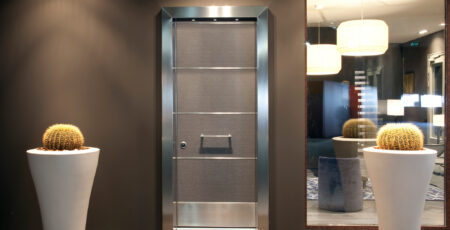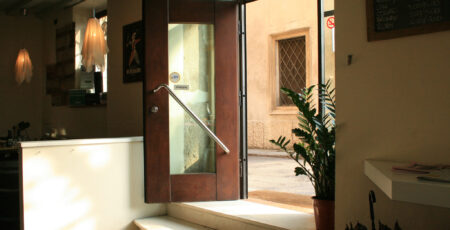One of the most popular features we offer at Fortified and Ballistic Security is biometric security authentication. In the past, we’ve offered fingerprint scanners, but now the vast majority of the biometric scanners we sell use facial recognition technology.
On the surface, it might seem like something special you could add to your luxury home — like something James Bond would have at his residence (and also maybe on the entrances to his hidden closets and his garage where he stores his Aston Martins, etc) — and you wouldn’t be wrong about that.
Facial recognition technology is really fascinating. But it’s much more than a fancy feature you can add to your custom security door. It’s one of the most effective ways to keep your home, bedroom Sanctuary™ System, or office secure.
Here’s how we can incorporate biometric security into your overall home security plan.
Securing Your Home with Facial Recognition Technology
Facial recognition technology is being incorporated into the technology we use every single day, mostly in our smartphones and tablets. Of course, the government and the military have been using tools like this for years. The fact that it’s finally being added to home security was inevitable.At FBS, we make really beautiful, one-of-a-kind custom security doors and windows, and we’re very good at it. We don’t like to brag, necessarily, but we like to believe we’re the best at what we do. We’ve yet to see anyone make security doors like ours. However, we’re not going to pretend that we know everything about technology. Just like we encourage you to trust us as experts in security doors and windows, we trust experts in biometric security to handle that aspect of our business.
As such, we’ve partnered with a German company called Adatis, which makes state-of-the-art 3D facial recognition technology that can be found all over the world. FBS Managing Partner David Vranicar met Dr. Michael Gilge many years ago. He is a founding member of Adatis and is still instrumental in daily operations.
Dr. Gilge first became interested in biometric technology in the early 2000’s, when biometry was still in its infancy. “Of course there were fingerprint scanners, but no facial identification on iPhones,” he remembers.
A friend had shown him a piece of Russian technology that was bulky and very expensive at the time, but was effective, nonetheless. It intrigued him, and he switched career paths after his previous entrepreneurial venture was sold to a larger security company.
Facial Recognition Technology: The Way of the Future
Dr. Gilge likens facial recognition technology to natural communication with, say, a doorman. “When you entered a building in the old days, you had somebody sitting there at the entrance and welcoming you each morning — recognizing you by your face.” This person asked you how you were and opened or unlocked the door for you. Nowadays, human personnel is being at least partially replaced by simple locks (which can largely be picked) and keys (which can easily be stolen). The idea of facial recognition replacing the doorman — or even securing areas that wouldn’t have previously been monitored by a doorman — not only increases the accuracy of security for a given building or room, but it allows individuals and businesses to use their human security personnel in more efficient ways.Dr. Gilge wanted to create a terminal for exterior doors that was more modern that could be used just about anywhere. He was familiar with the hodgepodge system most buildings had (and probably still have, in large part) outside their doorsteps. He calls it a museum.“It’s old-fashioned card readers, plus a camera which they installed sometime later… maybe a doorbell to ring somebody, maybe an old-fashioned telephone with a typed list of employees,” he says. The typed list of employees and extensions is a do-it-yourself model that may trigger someone to buzz you in, or otherwise have someone come down to get you. The camera should allow employees to double check the identification of the person asking for entrance. 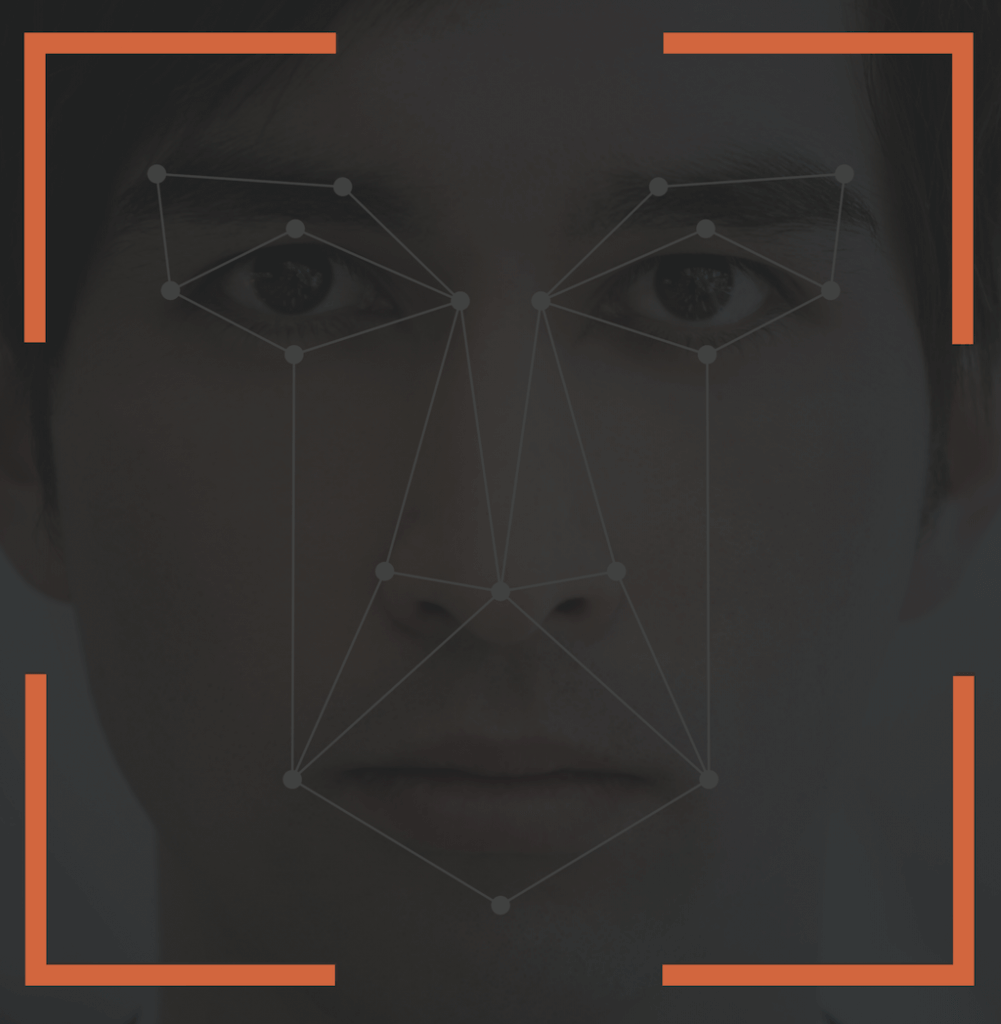
How Accurate is Facial Recognition?
Like any other biometric technology, facial recognition has its inaccuracies — nothing is ever 100% accurate, 100% of the time. However, it’s important to note the differences between Adatis terminals and the Face ID on your smartphone.If you’ve ever had trouble unlocking your smartphone using your face or your fingerprint, you may wonder how accurate and convenient biometric technology actually is. If it can’t even recognize your fingerprint when you’re holding it the exact right way (or the other five ways you’ve already tried it), how could it make your life more convenient? How do you know you won’t be standing outside your front door standing just so in order for the camera to read your face?Adatis facial recognition technology boasts a very low margin of error.As we’ve discussed before, mass marketed products need a larger margin of error to account for people who may not be as good with the device as others, and to make it more convenient for more people. In mass marketed biometrics products, there’s always a tradeoff — convenience for security. But if you’re trying to keep your commercial business, or your private residence safe, there’s no reason for you to make a sacrifice there. You need both convenience and security, which an Adatis terminal can provide for you.
The Role of Artificial Intelligence
In the past decade, artificial intelligence has made leaps and bounds, allowing biometric technology to tag alongside it. Dr. Gilge says that the older forms of facial recognition were relatively accurate — about 70-80% — but that AI was a game changer. “Incorporating AI increased the accuracy of facial recognition to about 90-95%, and these days, we’re talking about fractionals above 99%. Now, if you offer something to market below 99%, you’re not considered state-of-the-art.”Dr. Gilge points out that our smartphones are also using AI, which undoubtedly increases their accuracy. Regardless, the environment we’re in will always play a role in accuracy. 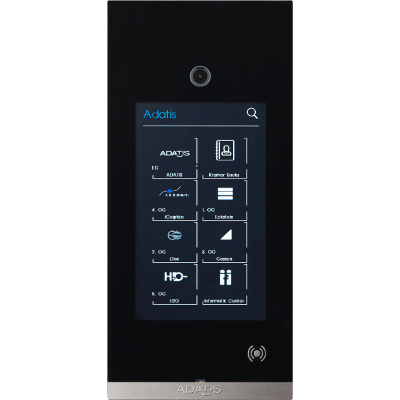
Biometric Security Backups
On smartphones and tablets, there’s typically a backup credential set up that can be substituted in the event that the primary credential isn’t available or functional. For example, fingerprint scanners use your body heat to trigger the reading, but that means they don’t work as well if the skin is too hot or too cold. If you’re wearing sunglasses, the Face ID feature on your smartphone may not work. Furthermore, as with any other facial recognition technology, the accuracy of your smartphone face ID is dependent on the right lighting — if it’s too bright outside, the camera won’t be able to make an identification. Therefore, the default is to deny access.In these cases, there must be a backup in place. In this regard, the theory is the same, whether you’re working with a smartphone or an Adatis terminal.“One type of credential could be knowledge — a passcode or answer to a question that you just know, and keep secret. Or it could be something you have in your possession, like a card or a fob,” Gilge says. But he brings up that neither of these are foolproof. “You could drop one of these things. Someone could pick it up and use it unauthorized.”To get around issues like this, Adatis designed something we’re all getting more familiar with as our lives become more digital: 2-factor authentication.In this case, you’d need two credentials in order to gain access to a space, which adds another layer of security. He says that could be something like your face and a keycard, or your face and a passcode.
Critical Biometric Applications
Dr. Gilge also brings up the critical nature of 2-factor authentication (including biometry) in sensitive industries. For example, people who work in the food industry, preparing and packaging food that is sold in grocery stores around the world, or work in water purification plants. People who work in places like these typically go through extensive background checks to protect the products they’re making. A security risk is not something that can happen in these cases, due to the potentially catastrophic nature someone malicious could have on a countless number of people. Dr. Gilge posits that high-risk jobs and low wages often go hand in hand, which presents a significant security risk. He says that if someone is unable to work one day (perhaps due to illness), but they can’t miss their shift, they may ask a friend to fill in.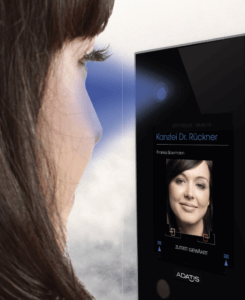
Incorporating Biometric Security into Your Luxury Home
More than anything, incorporating facial recognition into your private residence is a way to keep your family safe every moment that they’re occupying the home. Even when you’re not there, the biometric security measures you put in place will be hard at work, maintaining your fortress in your absence. But one aspect of this technology that many people seem to forget is the peace of mind biometric scanners can provide for you. With the way current technology stands, facial recognition is the most accurate and secure way of identifying someone.You can even schedule times when people are allowed to access your residence, such as house managers and personal assistants. You can choose certain days, and even windows of time when they’re allowed inside to maintain the home. Adatis biometry combined with our Sanctuary™ Management System is the perfect way to keep your luxury home secure, while maintaining the convenience you need.If you’re ready to talk about how facial recognition can be incorporated into your luxury home or commercial office, don’t hesitate to contact us today!

